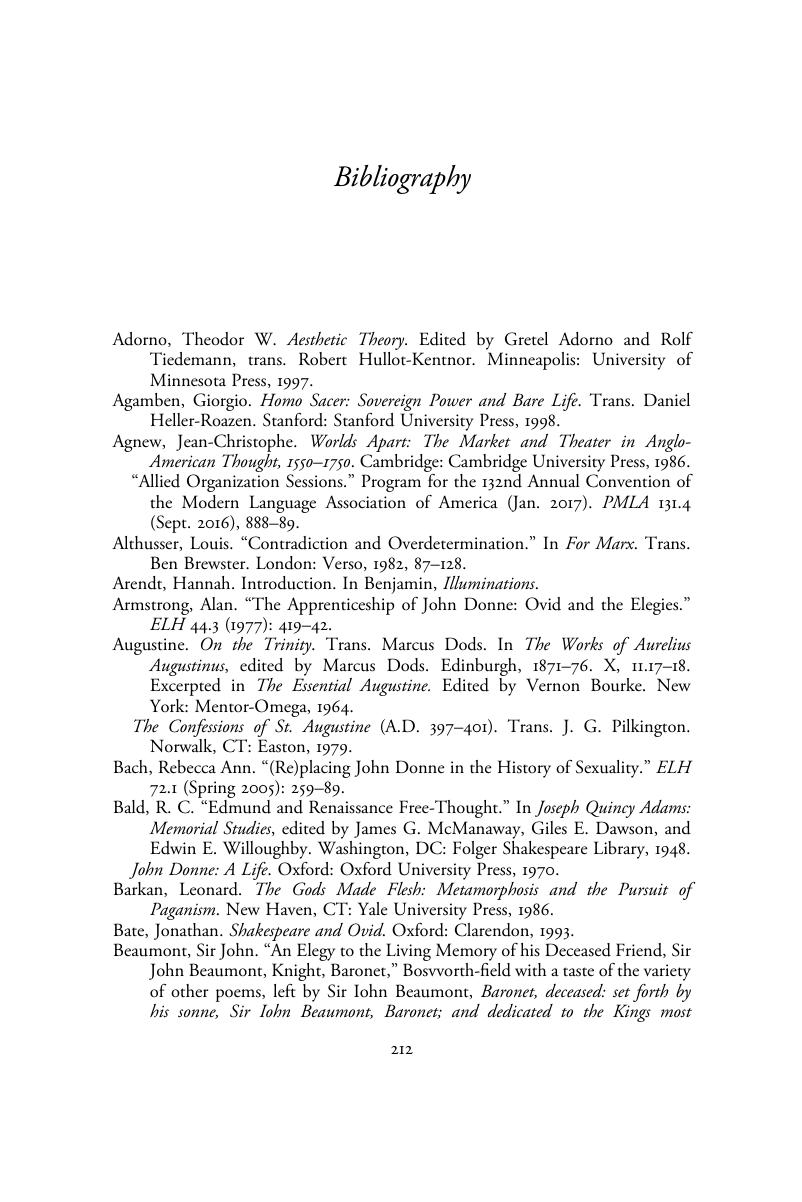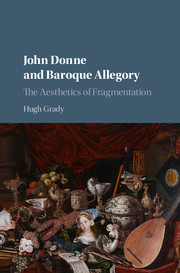Book contents
- John Donne and Baroque Allegory
- John Donne and Baroque Allegory
- Copyright page
- Dedication
- Contents
- Acknowledgments
- 1 Walter Benjamin and John Donne
- 2 The Anniversaries as Baroque Allegory
- 3 Donne’s The Songs and Sonets
- 4 Allegorical Objects and Metaphysical Conceits
- 5 The Metaphysics of Correspondence or a Fragmented World?
- Conclusion
- Bibliography
- Index
- References
Bibliography
Published online by Cambridge University Press: 30 August 2017
- John Donne and Baroque Allegory
- John Donne and Baroque Allegory
- Copyright page
- Dedication
- Contents
- Acknowledgments
- 1 Walter Benjamin and John Donne
- 2 The Anniversaries as Baroque Allegory
- 3 Donne’s The Songs and Sonets
- 4 Allegorical Objects and Metaphysical Conceits
- 5 The Metaphysics of Correspondence or a Fragmented World?
- Conclusion
- Bibliography
- Index
- References
Summary

- Type
- Chapter
- Information
- John Donne and Baroque AllegoryThe Aesthetics of Fragmentation, pp. 212 - 225Publisher: Cambridge University PressPrint publication year: 2017



